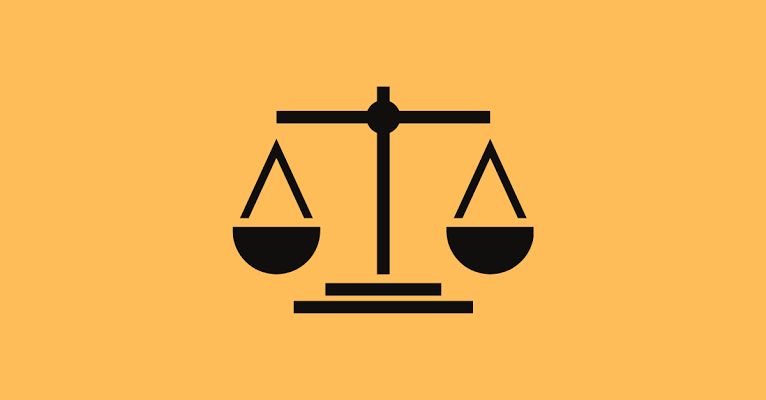Author: Shaik Umarfarooq, Lovely Professional University
To the Point
The ₹94 crore scam unearthed in Karnataka’s Maharshi Valmiki Scheduled Tribes Development Corporation has unravelled a disturbing misuse of government funds intended for the upliftment of one of India’s most marginalized communities. This scam, revealed in 2024, involved digital forgery, fraudulent approvals, and alleged political collusion. The fallout extended beyond the bureaucratic circle and triggered legal investigations under various provisions of the Indian Penal Code and the Prevention of Corruption Act. This article examines the scam through a legal lens, detailing the fraud mechanism, the statutory violations, and the systemic lapses that allowed such exploitation.
Use of Legal Jargon
The case involves violations of fiduciary duties, misappropriation of public funds, criminal breach of trust (Section 409 IPC), forgery (Sections 463–465 IPC), use of forged documents (Section 471 IPC), and conspiracy (Section 120B IPC), all compounded by the abuse of official position under the Prevention of Corruption Act, 1988. The scam also engages the jurisdiction of the Karnataka Lokayukta and relevant sections of the Information Technology Act due to the digital nature of fund transfers.
The Proof
In March 2024, internal auditing discrepancies in the Valmiki Corporation revealed that nearly ₹94 crore allocated for tribal welfare schemes had been diverted fraudulently using digital banking credentials of the Managing Director (MD), without their knowledge. Initial findings indicated that unauthorised fund transfers were executed using forged OTPs and fabricated digital signatures. Further forensic digital analysis traced suspicious transactions to several fictitious accounts, with amounts ranging from ₹5 lakh to ₹15 crore.
The key evidence included:
Digital Footprint Analysis: IP addresses linked to multiple fund transfer requests were traced to private locations with no affiliation to government offices.
Forged Approval Files: Internal communications between mid-level officials were reconstructed to expose backdated approvals and manipulated beneficiary lists.
Audit Trail from Banks: Cooperative banks confirmed that many accounts used to receive the illicit funds were opened using falsified Know Your Customer (KYC) documents.
Confessions and Witness Statements: Two officials from the finance department of the Corporation turned approvers, providing details about how passwords and authentication mechanisms were bypassed.
The scam unravelled following the resignation of Valmiki Corporation’s MD, who categorically denied authorising any of the disbursed loans. The MD’s prompt legal notice and subsequent FIR catalysed the investigation, bringing in the Criminal Investigation Department (CID) of Karnataka.
Abstract
This article delves into the ₹94 crore scam that rocked Karnataka’s tribal welfare system in 2024. At the centre lies the Valmiki Development Corporation, a government-backed agency entrusted with providing financial assistance to Scheduled Tribe beneficiaries through skill programs, loans, and subsidies. However, instead of empowering tribal communities, the funds were illicitly transferred by a nexus of corrupt officials, bank insiders, and possibly political agents. The scam raises significant questions about digital security, internal controls, and political accountability in public financial systems.
The article critically analyses the legal framework invoked to investigate the scam, including the IPC, IT Act, and Prevention of Corruption Act, alongside examining the institutional weaknesses and suggestions for legal reforms to prevent recurrence.
Case Laws
While this scam is under current investigation, several precedents and analogous case laws are relevant:
1. State of Gujarat v. Mansukhbhai Kanjibhai Shah, (2020) 20 SCC 569
This case held that public servants who misappropriate welfare funds can be prosecuted even if no direct beneficiary complaint is filed, provided the offense effects public interest.
2. Subramanian Swamy v. Manmohan Singh, (2012) 3 SCC 64
The Supreme Court upheld the right of citizens to seek prosecution of public servants under the Prevention of Corruption Act even without departmental sanction, highlighting transparency and accountability.
3. CBI v. Ramesh Gelli, (2016) 3 SCC 788
This ruling clarified that bank officials, even in cooperative or quasi-government setups, are “public servants” and can be prosecuted for corruption.
4. State of Maharashtra v. Tapas D. Neogy, (1999) 7 SCC 685
Clarified that bank accounts used for misappropriation can be frozen under Section 102 CrPC even without naming the accused in FIR.
These cases offer judicial perspectives on the misuse of public office, forgery, and handling of misappropriated funds each of which applies in the present context.
Conclusion
The Karnataka Valmiki Corporation scam is a tragic example of systemic failure. The ₹94 crore intended for marginalized tribal citizens instead ended up fuelling corruption and deceit. It exposes the loopholes in administrative oversight, digital governance, and ethical responsibility.
From a legal standpoint, the case underscores the need for:
Mandatory dual authentication for high-value public transactions.
Institutional audits through third-party agencies.
Swift prosecution under IPC, POC Act, and IT Act without bureaucratic delays.
Legislative reforms to empower whistleblowers and enhance citizen oversight on public welfare schemes.
As the legal proceedings unfold, the judiciary’s role in ensuring swift and fair justice will be critical not only in punishing the guilty but also in restoring public trust in governance systems.
FAQS
Q1: What is the Valmiki Corporation scam about?
The scam involves the misappropriation of ₹94 crore from Karnataka’s Valmiki Development Corporation, where funds meant for tribal welfare were illegally diverted using forged digital authorizations.
Q2: Which laws are applicable to this scam?
The relevant laws include Sections 409, 463–465, 471, 120B of the IPC, Prevention of Corruption Act, 1988, and Information Technology Act, 2000.
Q3: Who is being investigated?
Several corporation officials, bank insiders, and unknown persons involved in the digital fraud and fund transfers are under probe. Some junior officials have turned approvers in the case.
Q4: What action has been taken so far?
The CID is handling the investigation. Bank accounts have been frozen, digital evidence is being collected, and arrests are being made. A Special Investigation Team (SIT) may also be formed.
Q5: Will the misappropriated money be recovered?
While some funds have been traced and accounts frozen, recovery will depend on court orders and the status of seized assets.
Q6: Can the MD of the corporation be held liable?
Since the MD filed the complaint and had no knowledge of the transfers, prima facie there is no liability unless future evidence proves otherwise.
Q7: How can such scams be prevented?
Stronger digital security protocols, automated red flags in financial systems, regular audits, whistleblower protection, and severe penalties for misuse of welfare schemes can help.



